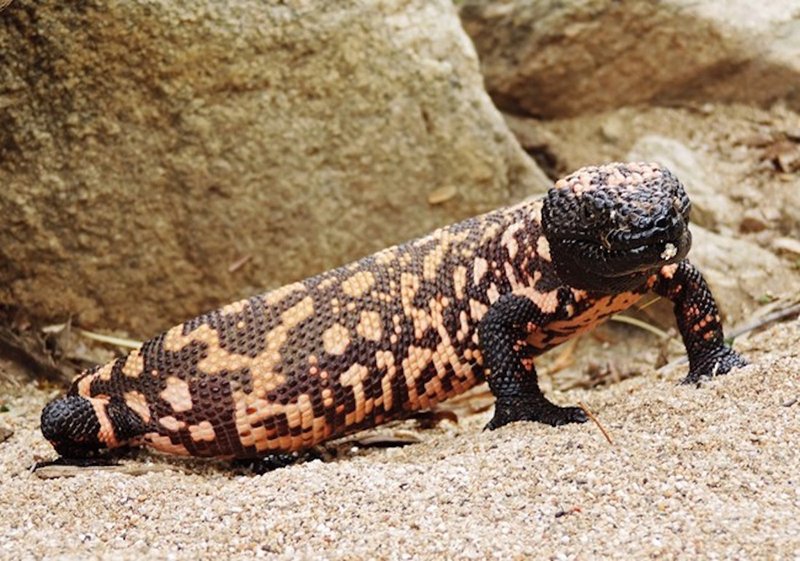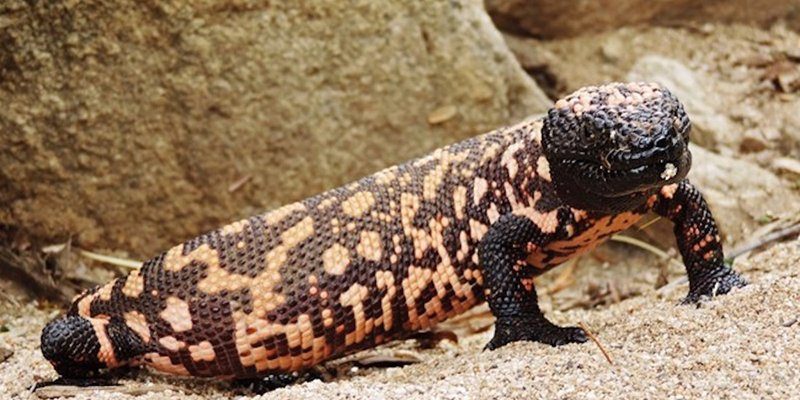
The Gila monster isn’t just any lizard. It’s one of only a few venomous lizards in the world. With a chunky body, distinctive orange and black pattern, and a slow, lumbering way of moving, the Gila monster stands out in the reptile kingdom. Its fascinating traits and behavior make it a subject of interest for both scientists and wildlife enthusiasts alike. So, grab a comfy chair, and let’s dive into the top ten fascinating facts about the Gila monster.
1. Gila Monsters Are Venomous
You might be wondering about the Gila monster’s venom. Unlike snakes, which deliver venom through fangs, Gila monsters have grooves in their teeth. When they bite, their venomous saliva seeps into the wound, causing intense pain and swelling. In humans, a bite isn’t usually fatal but can lead to severe discomfort.
Understanding this unique method of venom delivery helps explain why these lizards are not only fascinating but also essential in their ecosystem. Their venom helps them subdue prey like small mammals, birds, and eggs. While their bite can be scary, it also shows how nature has equipped them to survive in their harsh environments.
2. They Have a Colorful Appearance
Gila monsters are famously known for their striking colors. Their skin has a splotchy pattern of black, orange, and yellow, which not only makes them look unique but also serves as a form of camouflage. This vibrant coloration can help deter potential predators. After all, a brightly colored animal often signals danger, and many creatures instinctively avoid them.
But it’s not all about looks. Their skin is also covered in bead-like scales that help protect them from the sun in their desert habitat. Imagine wearing natural armor that helps you stay cool—pretty neat, right?
3. They’re Slow Movers
Unlike some speedy reptiles, Gila monsters are rather slow-moving. They typically crawl along at a leisurely pace, which is partly due to their stout bodies and short legs. This slow approach works in their favor. Since they’re not fast hunters, they rely on their keen sense of smell to find food, rather than chasing after it.
When foraging, Gila monsters can often be seen digging through the ground or climbing over rocks in search of eggs or small mammals. Their unhurried demeanor can be a bit of a surprise, especially when compared to other lizards that dart about.
4. They’re Great at Storing Energy
Gila monsters have fascinating adaptations for desert living. They can store fat in their bodies, which helps them survive during times of food scarcity. In fact, they can go several weeks or even months without eating! This ability to store energy is crucial in their dry, hot environment, where food may not always be readily available.
When they do find food, they may eat large meals to replenish their energy reserves. Think of it like charging your phone: they fill up their energy when they find food and draw from that energy when times are tough.
5. Their Habitat and Range
The Gila monster is primarily found in the southwestern United States and parts of Mexico, particularly in desert environments and rocky hillsides. They thrive in areas where there are plenty of hiding spots, like burrows and crevices, which provide shelter from the heat and predators.
These lizards are usually more active during the spring and fall when temperatures are milder. During the hot summer months, they become less active and often retreat to their burrows to escape the intense heat. This behavior helps them conserve energy and stay safe.
6. You Can’t Keep Them as Pets
While the Gila monster might seem like a cool pet, it’s actually illegal to keep them in many places. They’re protected by law in the U.S. and can only be kept under specific circumstances, like in licensed zoos or research facilities.
Even if they were legal to keep, they’re not the easiest pets. Gila monsters have specialized care needs, including specific diets and temperature ranges that might be tricky to replicate in a home setting. Plus, their venomous nature adds a level of risk that most people prefer to avoid. So, if you’re looking for a reptilian friend, you might want to consider a more traditional pet lizard!
7. They Can Live for a Long Time
Gila monsters have impressive lifespans for reptiles. In captivity, they can live up to 20 years or even longer! This longevity is partly due to their slow metabolism and low activity levels—a bit like having a slow cooker compared to a fast oven.
In the wild, their lifespan may be shorter due to threats like predators and habitat loss. Still, those that survive the harsh conditions of the desert can live quite a long time, making them a resilient species.
8. Gila Monsters Are Territorial
Like many reptiles, Gila monsters have a strong sense of territory. They often establish home ranges that they defend against other Gila monsters. This territorial behavior is especially noticeable during the breeding season when males may fight over females or defend their territory from other males.
Being territorial helps them ensure they have enough food and resources in their environment. Although fights can be intense, they rarely lead to severe injuries, thanks to their slow, deliberate nature.
9. Their Diet Is Unique
Gila monsters are carnivorous, with a diet that mainly consists of small mammals, birds, and eggs. They have a particular fondness for the eggs of birds and reptiles. When they find a nest, they’ll use their powerful jaws to break into it.
Interestingly, they can eat larger meals than many lizards due to their ability to store fat. This means a Gila monster might eat one or two eggs and not need to eat again for some time. Think of them like little survival experts, managing their meals to last them through lean times.
10. Cultural Significance
In addition to being biologically fascinating, Gila monsters hold cultural significance for many Indigenous peoples in the Southwest. They feature in a variety of stories, myths, and traditions, often symbolizing strength and resilience.
In some cultures, their unique appearance and characteristics inspire art, jewelry, and storytelling. Recognizing this cultural aspect adds another layer to our understanding of the Gila monster beyond just biology—it reminds us that these creatures are interwoven with the history and traditions of the people who share their habitat.
In conclusion, the Gila monster is more than just a colorful lizard; it’s a creature with a rich set of behaviors, adaptations, and cultural importance. From its venomous bite to its unique dietary habits, each of these fascinating facts paints a picture of survival and resilience in a challenging environment. So, the next time you find yourself pondering the wonders of the natural world, remember the Gila monster and its incredible story!

